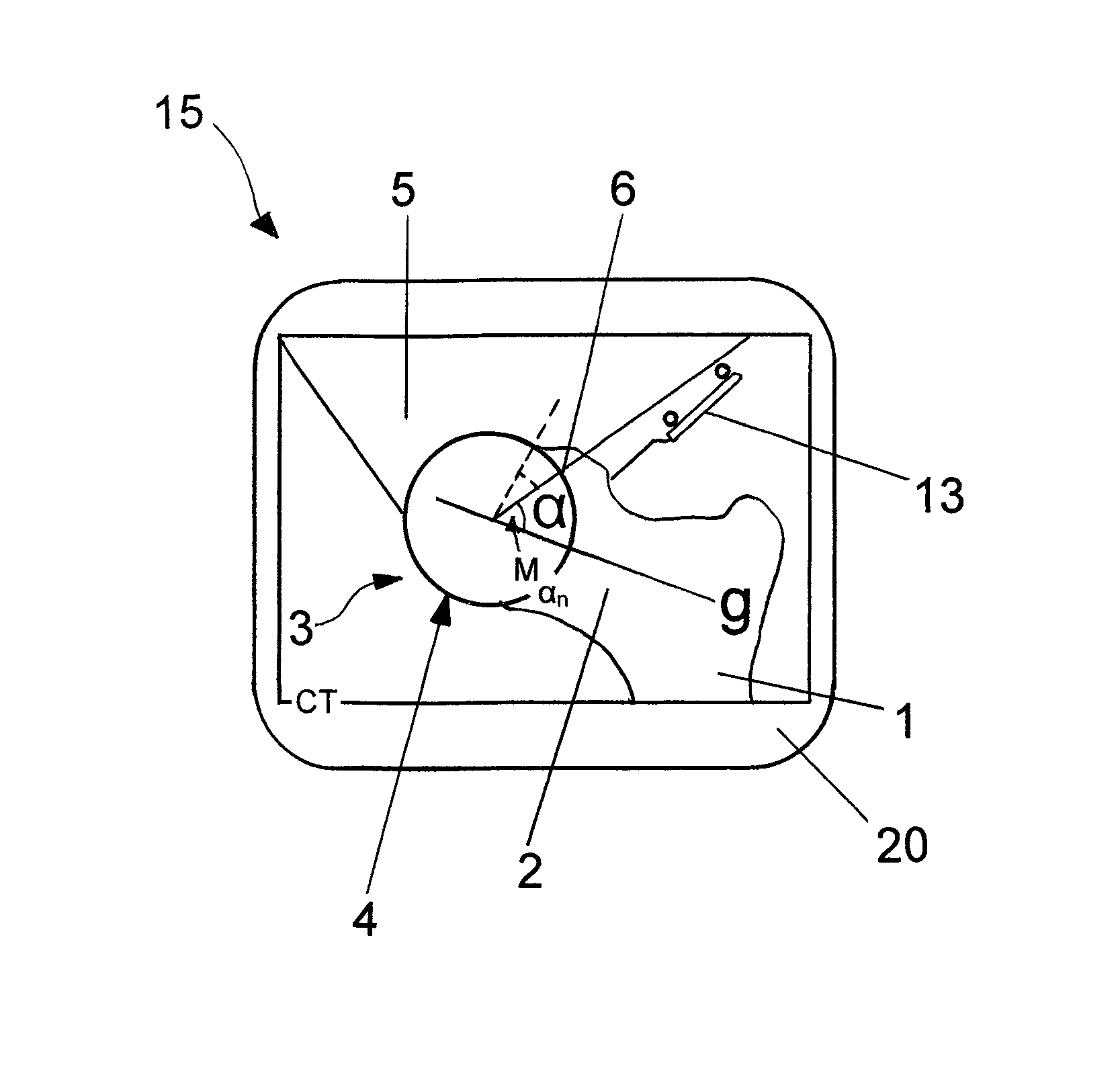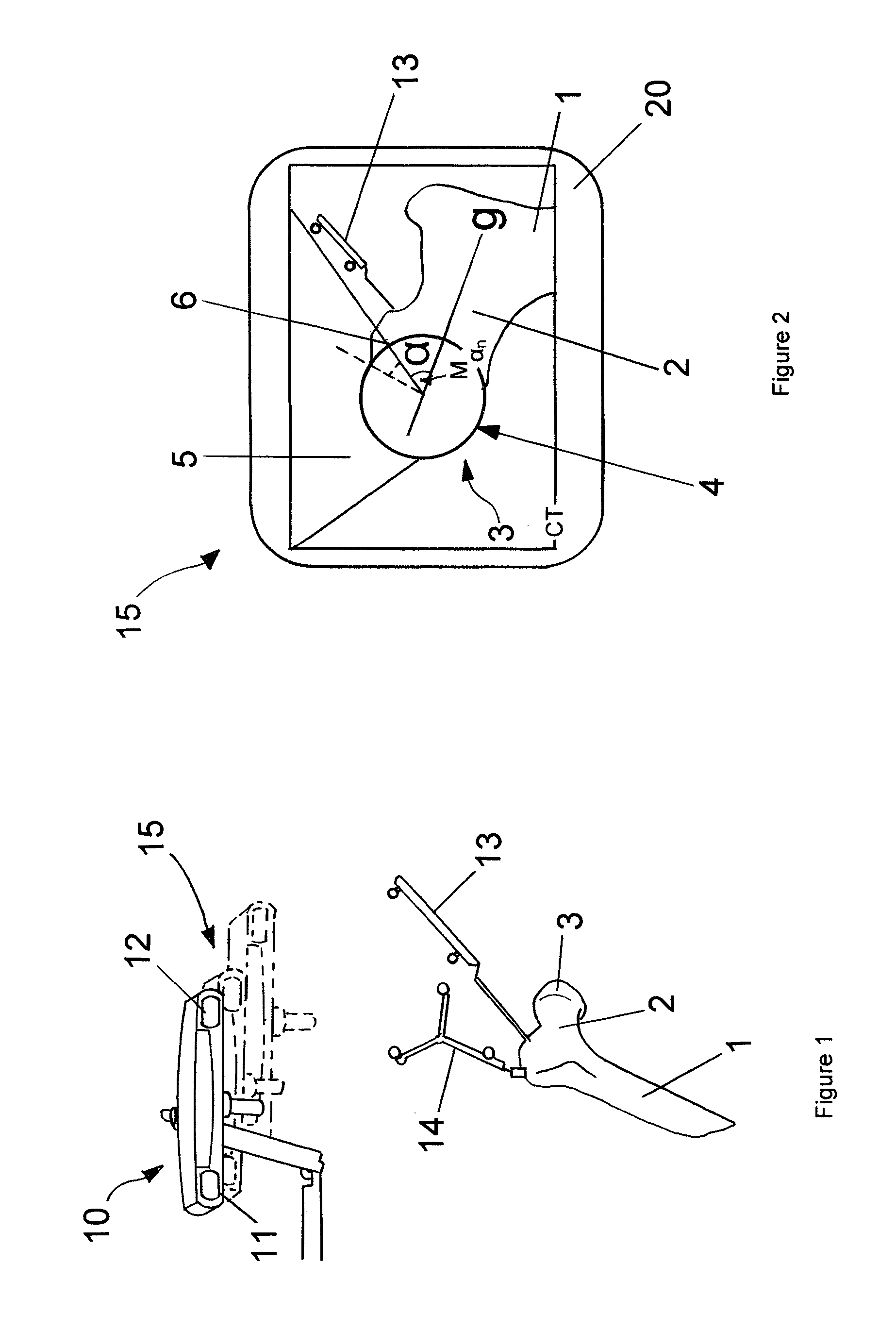Joint reconstruction planning using model data
a model data and reconstruction planning technology, applied in the field of joint reconstruction planning, can solve the problems of requiring a relatively long time for corresponding planning steps and computationally complex segments, and achieve the effects of avoiding elaborate and lengthy image processing operations, avoiding large expense, and sufficient reconstruction accuracy
- Summary
- Abstract
- Description
- Claims
- Application Information
AI Technical Summary
Benefits of technology
Problems solved by technology
Method used
Image
Examples
Embodiment Construction
[0027]FIG. 1 schematically shows how an upper part of a femoral bone can be positionally located and tracked and / or registered with the aid of a medical tracking system 10. The tracking system 10 comprises two cameras 11 and 12 which can track the position of specific markers. Such markers are for example situated on the reference star 14 or on the pointer 13, which are shown in the lower part together with the image of the femoral bone 1, on which the femoral neck 2 and femoral head 3 can be seen.
[0028]The reference star 14 is fixedly connected to the femur 1. Because an image data set of the femur 1 has been produced beforehand, it is then possible to positionally assign this image data set to the femoral bone 1 via the reference star 14, i.e. to register the femoral bone. Therefore, the location of specific reference coordinates is then known, and direction information is also available, for example via the location of the femoral axis, the neck axis or the centre point of the he...
PUM
 Login to View More
Login to View More Abstract
Description
Claims
Application Information
 Login to View More
Login to View More - R&D
- Intellectual Property
- Life Sciences
- Materials
- Tech Scout
- Unparalleled Data Quality
- Higher Quality Content
- 60% Fewer Hallucinations
Browse by: Latest US Patents, China's latest patents, Technical Efficacy Thesaurus, Application Domain, Technology Topic, Popular Technical Reports.
© 2025 PatSnap. All rights reserved.Legal|Privacy policy|Modern Slavery Act Transparency Statement|Sitemap|About US| Contact US: help@patsnap.com


